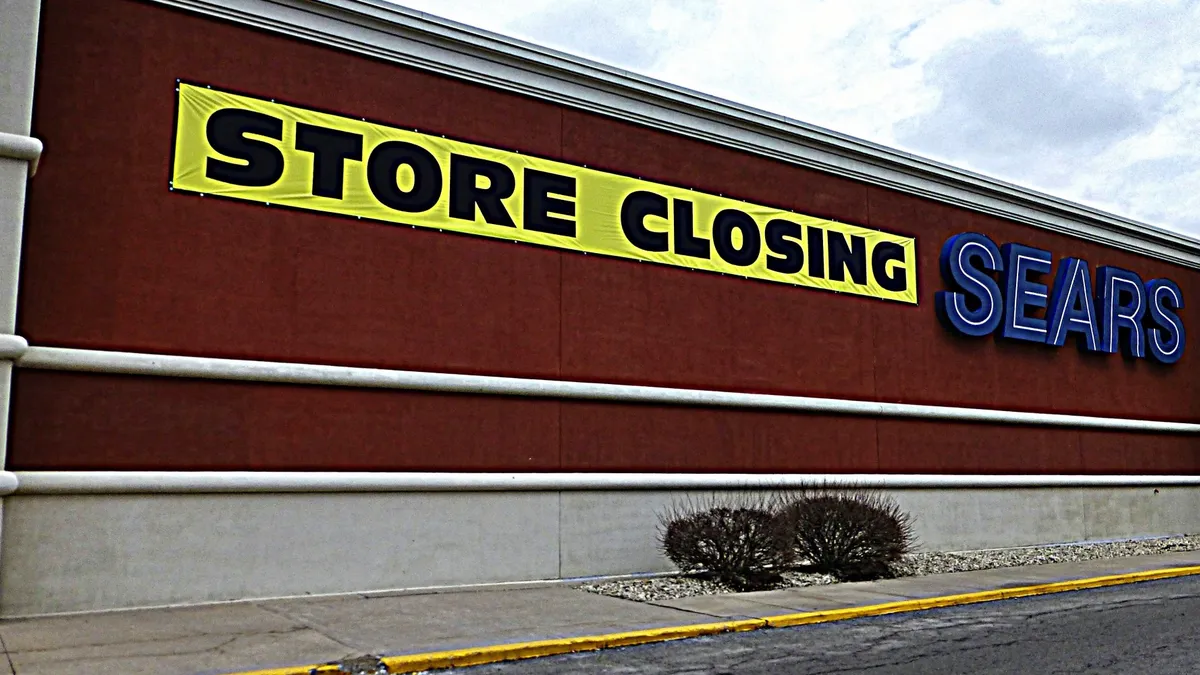Dive Brief:
-
Sears Holdings Corp CEO Edward Lampert reassured shareholders that despite unfavorable media coverage the retailer is on its way to recovery. "We don't need more customers. We have all the customers we could possibly want," he said at the company’s annual shareholders meeting Wednesday. Fortune confirmed the comments with a Sears spokesman.
-
Lampert, who compared Sears’ and Kmart’s years-long profit drought to Amazon’s sales-building days, also blasted coverage of the retailer as "deliberately unfair” and "meant to scare our vendors,” which he said then costs retailers because vendors thereby accrue leverage in negotiations, the Chicago Tribune reports.
-
Sears, in March, expressed diminished hopes in its ability to continue operating, according to its annual report filing with the Securities and Exchange Commission.
Dive Insight:
Lampert apparently demonstrated frustration with what he characterized as untrue news reports about the company's fortunes. Sears Holdings executives, including Lampert, have often taken to the company's blog to refute rumors about store closings, vendor tussles and even the utter collapse of its Kmart division.
But by and large, the media is reporting facts and figures from analysts and the company's own financial disclosures and press releases. In December, Sears reported its 20th consecutive quarterly sales and revenue miss, and announced then it will accelerate the closing of unprofitable stores to combat declines. The company this year also sold its popular Craftsman tools line to Black and Decker for $900 million and has begun outsourcing its Kenmore home appliance brand.
It wasn't a huge surprise when rumors (eventually confirmed) of massive layoffs at Sears’ corporate headquarters began circulating in February. Lampert eventually released a letter to employees, published by Business Insider, stating that 130 positions were eliminated and iterating much of what a spokesperson also later told Retail Dive.
While Lampert and Sears defend layoffs and other restructuring efforts as a sober path back to viability, in practice the moves have served to pay debt and stave off death. Rather than devising a plan to rebuild store traffic and drive growth (its much touted and somewhat successful Shop Your Way omnichannel effort notwithstanding), Sears continues to rely on financial moves that merely prop it up (most notably a series of loans from Lampert’s hedge fund), Greg Portell, lead partner in Retail Practice at consulting firm A.T. Kearney, told Retail Dive earlier this year.
“Successful transformations make some big cuts and some big move and growth reemerges. Here after three or four of those little cuts where they haven’t been able to get growth going, we start to lose faith,” Portell said. “There is certainly a place for financial reengineering. But when Sears goes back to it numerous times, it is an indicator they don’t have a real business solution.”
Confounding onlookers most is Sears’ desire to sell its prized possessions. In addition to unloading Craftsman, the company spun off its Lands’ End unit in 2014, and is shopping around its Kenmore, DieHard and its Home Services business. The sale of Craftsman in particular “is a desperate move,” Walter Loeb, retail veteran and president of consulting firm Loeb Associates, wrote on discussion forum RetailWire earlier this year. “Selling iconic brands is devastating to the store. We are going to see a shrinking company with further losses.”












